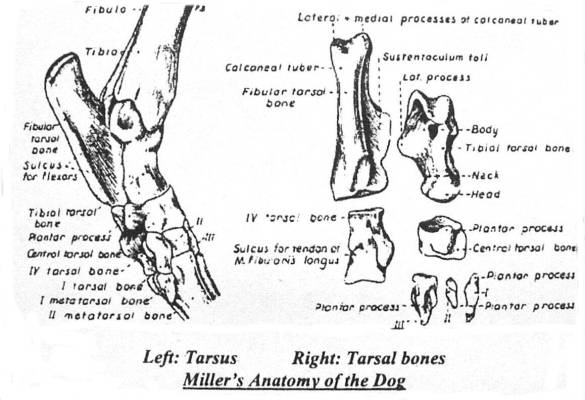HOCK FRACTURES

Von
Grone, Antoinette Baronesse (1954 - )
Image courtesy Barewalls.com.
Suzanne Stack,DVM

Right hock
fractures are the most common career ending injury of racing
greyhounds. Certainly, more toes and metacarpals/metatarsals
(“quarter bones") are broken, but their racing careers are more
often salvageable. The right hock is usually the one to go, most
commonly in the first turn, where the greyhound pushes off with it
on the banked curve. There is perhaps one fractured left hock for
every 30 fractured right hocks.
My feeling is that
adoption groups should not reject these greyhounds because they lack
funds to fix the hocks. It's been about 10 years since I've been
around racetracks --but back then, unless an owner planned to
continue the dog's racing career, a broken hock was never fixed. To
heal adequately for pet purposes (though they will lack the few
1/100s of a second needed for racing), all the majority of hock
fractures need is 6 -- 12 months of house or kennel rest somewhere.
The 'how long' depends on how picky the adopter is -- does the gait
need to be perfect before they will accept the dog? Is there an
adopter who will take the greyhound if the gait never does become
perfect in one of the "bad" fractures?
The reason hocks heal so well with so
few repercussions is that the usual fracture is a slab fracture of a
tiny (<1") bone (central tarsal bone) in a non-moving joint.
Sometimes, more than one of these tiny tarsal bones is involved -
there are 5 of them, plus the larger talus and calcaneus bones
making up the hock joint. Since the fracture is in a non-moving
joint to begin with, the arthritis that develops around the site is
fairly insignificant to the dog's movement. And it takes movement to
cause pain.
There are a few more disastrous hock
fractures, such as when the tip of the calcaneous bone (tip of the
hock) breaks off and the dog's Achilles tendon goes with it. This is
a dog that really needs surgery to function right. But, the bottom
line is, I still wouldn't let him die for lack of funds for an
orthopedic surgery. My old lady, Jamie, is living proof that while
these greyhounds are gimps (mechanically, their Achilles tendon does
not work), they're not in pain for the rest of their lives.

Many kudos to the groups who do fix these fractures. And also to racing owners who will pay for surgery even when the greyhound is "all done.” But, for those groups who can't afford it - if you have a foster home that can give a hock fracture house rest (no galloping) for a long, long time, please take these greyhounds and give them a chance. Except for the big calcified bump on that hock, they will be "good as new" once healed.

©
Copyright 2015 GreytHealth.com. All rights reserved.
Website by
WagWorks